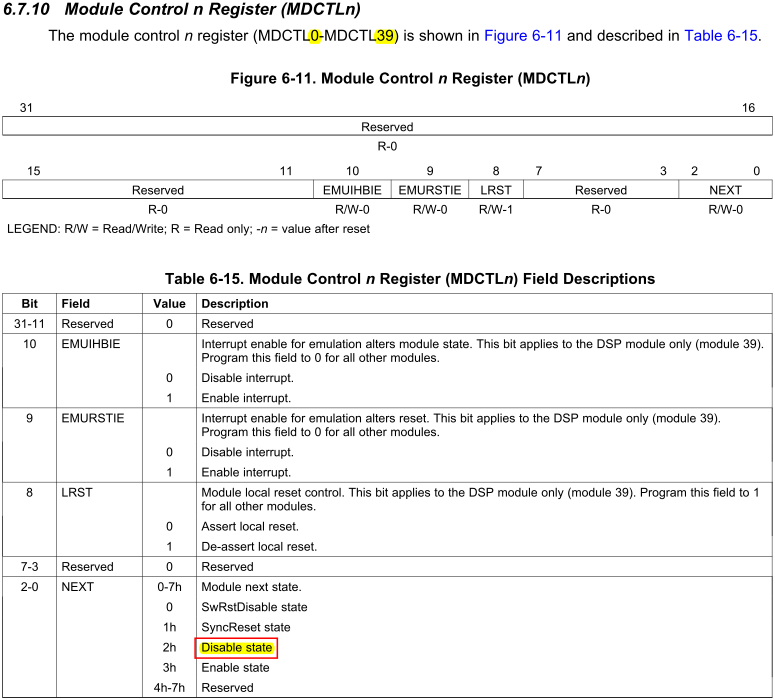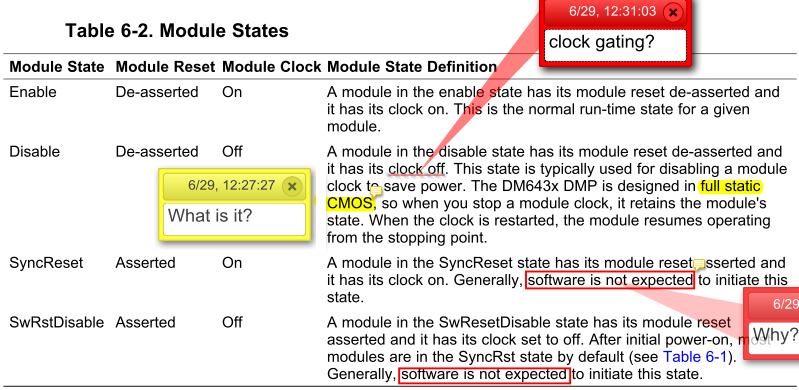Hi,
I would like to ask some questions on power management.
From section 3.2 Power Considerations of sprs345d TMS320DM6437 Digital Media Processor & section 6.7 6.7 PSC Registers and chapter 7 Power Management of SPRU978E TMS320DM643x DMP DSP Subsystem Reference Guide, there exist the following modes for power consumption on DM6437 device:
|
Clock gating |
|
Frequency scaling |
|
PLL bypass & power down |
|
Sleep mode |
|
3.3V I/O power down |
|
Video DAC Power Down |
Question 1:
1. In the extreme, how much (in percentage) power consumption can be achieved if one aggressively applies all these methods? Could TI provide any statistics?
2. In normal case, how much percentage of power can be saved?
On page 75 of SPRU978E, TMS320DM643x DMP DSP Subsystem:

Question 2
What does the values of NEXT mean here? Does “2h Disable state” correspond to “clock gating” or “power down”, or else? What does
1. SwRstDisable
2. SyncReset
mean, respectively?
Zheng

